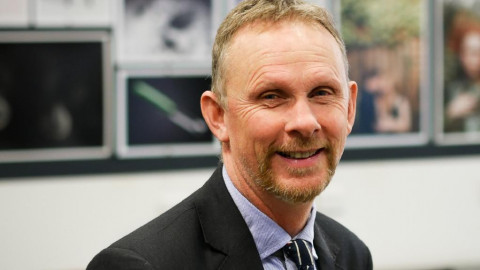
MICK GRIMLEY
The prevalence of autism is rising and, increasingly, mental health conditions are affecting school-age children. Add to these statistics social disadvantage and specific learning differences to see today’s classroom is diverse, complex and challenging.
Recent Department of Health reports indicate about one in seven school-aged children suffers from mental ill-health, the most common conditions being anxiety, ADHD and depression. Autism diagnoses are increasing and stand at one in 62 children. But why are these conditions on the rise, creating difficult teaching conditions, and what can be done to ease pressure on educators?
The increased prevalence of autism is an opportunity to transform the classroom. Mapping the future classroom within the context of autism requires a discussion on classification, early and improved identification, disclosure, a changing classroom experience, inclusion and the need for postgraduate education in special education.
In the fifth edition of the American Psychiatric Association’s Diagnostic and Statistical Manual of Mental Disorders (DSM-5) in 2013, autism spectrum disorder was reclassified as a single disorder containing several previously classified conditions. In DSM-5, Asperger’s, childhood disintegrative disorder and pervasive developmental disorder not otherwise specified all sit under one classification of autism spectrum disorder, which partly explains the increased diagnoses.
Early and improved identification is another mechanism that increases autism diagnoses by teachers, parents and health professionals. In 2008, new funding was introduced to support early intervention and has resulted in more cases being identified.
Technological innovations have increased information sharing and created greater awareness of autism and its symptoms, and therefore a need to equip existing teachers with the skills to teach diverse classrooms. Disclosure of a condition such as autism is often difficult because of social stigma, but schools rely on a diagnosis to access education support funding. Thus, parents and carers must make difficult choices if they wish to improve support for their child, resulting in further increases in diagnoses.
Another aspect to increased diagnoses of autism is in the changing nature of classrooms, with education moving away from traditional transmission teaching.
Contemporary classroom practices involve group work and collaboration, which highlight mental health conditions and communication and social interaction challenges associated with ASD. Current wisdom suggests children with ASD should be placed, wherever possible, in inclusive environments such as mainstream schools.
Consequently, mainstream teachers are faced with an ever more complex and diverse teaching environment but will have received only basic special educational needs as part of their initial teaching program.
It seemed obvious when developing Torrens University’s postgraduate education courses that we could promise the right skills needed for educating in a mainstream classroom only if we created coursework that addressed classroom diversity.
Fulfilling this need led us to partner with members of the autism community in developing curriculum, so teachers’ professional development is dynamic, and informed by experience — rather than a purely theoretical approach — which they can apply to the contemporary classroom.
In education, it’s clear diversity is mainstream. Postgraduate development of educators is a must so they can rise to the challenges of teaching all children — including those with mental health issues or ASD. We must ensure teachers continue to develop their knowledge and skills.
Mick Grimley is Torrens University Australia’s dean of education.
from http://www.theaustralian.com.au/careers…
Editor's notes: the changes in autism criteria from the DSM-IV to the DSM-5 were expected to reduce the number of diagnoses ... and data suggests rate of increase may be a bit slower. The changes to diagnosis for autism spectrum disorder in the DSM-5 certainly do not "partly explains the increased diagnoses" as suggested above.
Reports vary significantly of the number of Australia children who are autistic. While the author above claims "one in 62", a recent article in the BMJ found in about 2015 parents reported 3.9% of Australian school student aged 10-11 years old were autistic (see http://bmjopen.bmj.com/content/bmjopen/…). There are numerous other estimates — see http://a4.org.au/node/1452
The ASD community, like the AMA (see here), is concerned that most autistic children do not have their autism identified before they enter school, which means they do not get valuable early intervention so their educations outcomes, their employment prospects and their adult life are more challenging than they should be.